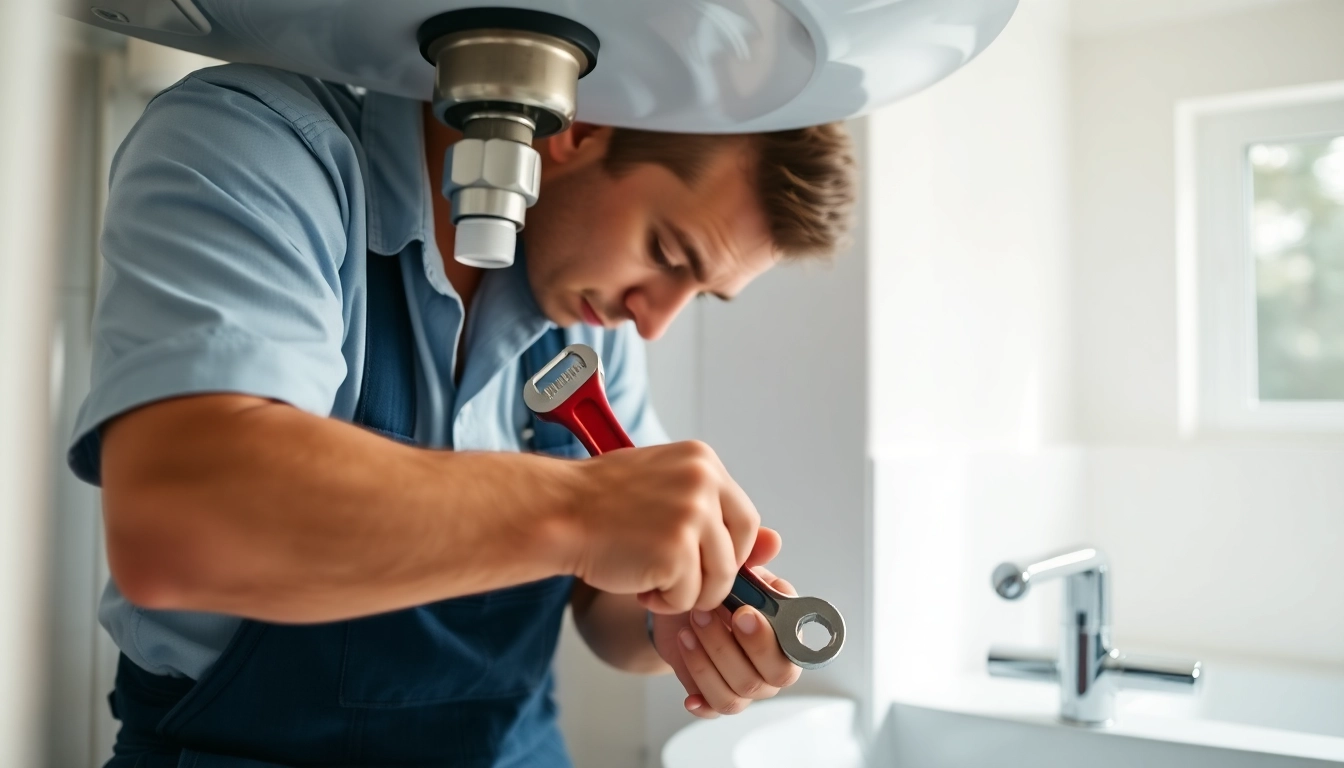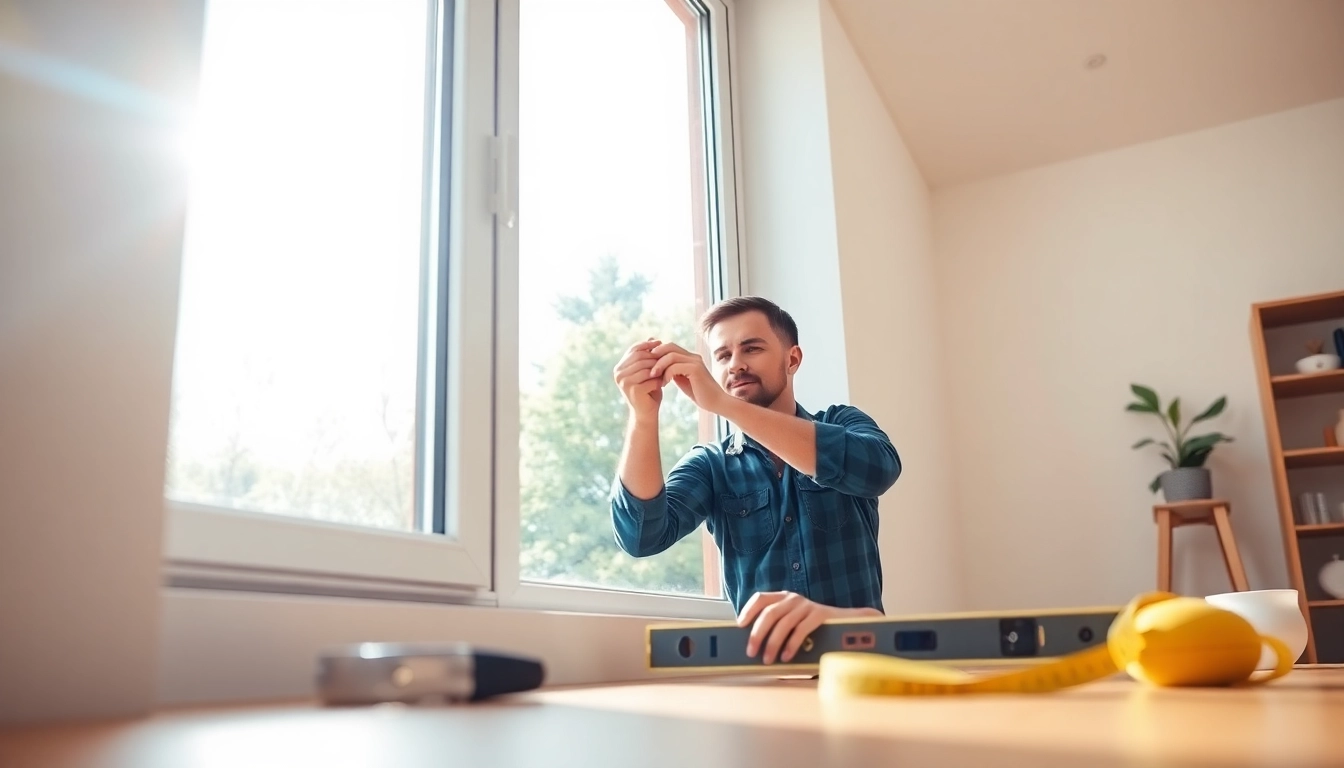Understanding Plumbing: Basics and Importance
Plumbing is a vital aspect of modern living, forming the backbone of sanitary systems in any residential or commercial building. It incorporates a complex network of pipes, fixtures, and appliances that transport water and waste, ensuring that our daily activities are carried out smoothly and hygienically. Understanding plumbing is not only useful for homeowners but also essential for those looking to maintain property value and ensure safety. This comprehensive guide will delve into the basics of plumbing, its importance, the tools necessary for maintenance, common issues, and upgrading strategies to enhance efficiency.
What is Plumbing?
Plumbing refers to any system that conveys fluids for a wide range of applications. It uses pipes, valves, plumbing fixtures, tanks, and other apparatuses to manage the distribution and disposal of water. Essentially, plumbing encompasses both the potable water supply and the drainage system, with its effectiveness significantly impacting health, hygiene, and convenience.
The Role of Plumbing in Modern Homes
The role of plumbing in modern homes extends beyond simply delivering hot and cold water and removing waste. Proper plumbing systems ensure adequate pressure, prevent leakages, and maintain hygiene. Features such as water heaters, bathrooms, and laundry facilities all depend on well-designed plumbing systems. A functional plumbing system contributes to comfort, enhances lifestyle, and is a crucial consideration during home construction or renovation.
Common Plumbing Systems Explained
Plumbing systems can be broadly categorized into two primary systems: the supply system and the drainage system.
- Supply System: This system delivers clean water to various fixtures within a building, such as sinks, toilets, and water heaters. It operates under pressure to efficiently transport water from the main supply to each outlet.
- Drainage System: This system includes the pipes and fixtures responsible for removing wastewater from sinks, showers, and toilets. It relies on gravity to allow wastewater to flow from higher to lower points progressively.
Essential Plumbing Tools Every Homeowner Should Have
Must-Have Plumbing Tools for DIY Projects
Successful DIY plumbing tasks depend heavily on having the right tools. Here’s a list of essential plumbing tools that every homeowner should consider having:
- Wrench: Adjustable wrenches and pipe wrenches assist in tightening and loosening fittings.
- Plunger: A crucial tool for clearing blocked drains and toilets.
- Pipe Cutter: Provides precision cuts on pipes to ensure proper fitting.
- Drain Snake: Useful for unclogging deep blockages in your plumbing system.
- Tape Measure: For measuring distances and ensuring accurate installations.
- Plumbing Pliers: Helps in gripping and turning different components.
- Safety Goggles: Protects your eyes from splashes during plumbing repairs.
How to Choose Quality Plumbing Supplies
Selecting quality plumbing supplies is crucial for effective repairs and installations. Here are key considerations:
- Material: Opt for materials that suit your climate and installation needs. For example, PVC is ideal for drainage while CPVC might be preferred for hot water supply.
- Durability: Choose products that are resistant to corrosion and wear to extend the life of your plumbing systems.
- Certification: Ensure that plumbing supplies meet local codes and standards for safety and performance.
Organizing Your Plumbing Toolkit Effectively
Once you have amassed a collection of plumbing tools, organization becomes essential. Here are some strategies:
- Toolbox: Invest in a sturdy toolbox that has compartments for various tools, making it easy to find what you need.
- Labeling: Clearly label drawers or bins for easy identification of tools and supplies.
- Maintenance: Regularly clean and maintain your tools to ensure they remain in good working condition.
Common Plumbing Issues and How to Fix Them
Identifying Dripping Faucets: Causes and Solutions
Dripping faucets can be both annoying and wasteful. The common causes include wear and tear of washers or seals, corrosion, and improper installation. To fix a dripping faucet:
- Turn off the water supply.
- Disassemble the faucet to identify the issue.
- Replace worn-out washers or seals and reassemble.
- Turn on the water supply and check for leaks.
How to Unclog Drains: Simple Techniques
Clogged drains are a common household issue that can usually be addressed with a few simple techniques:
- Boiling Water: Pouring boiling water down the drain can dissolve minor blockages.
- Baking Soda and Vinegar: This natural remedy can break down grime. Pour a cup of baking soda followed by a cup of vinegar, then cover the drain for about 30 minutes before rinsing with hot water.
- Drain Snake: For tougher clogs, using a drain snake can physically remove blockages.
When to Call a Professional Plumber
While many plumbing issues can be tackled with DIY methods, there are instances where a professional should be contacted:
- When you encounter complex issues that require specialized knowledge, such as sewer line problems.
- If the plumbing issue leads to extensive water damage or structural problems.
- In cases where the necessary repairs exceed your skill level or tools.
Upgrading Your Plumbing Systems for Efficiency
Benefits of Eco-Friendly Plumbing Solutions
Modern advancements in plumbing have introduced numerous eco-friendly solutions. Benefits include:
- Water Conservation: Low-flow fixtures and dual-flush toilets can significantly reduce water waste.
- Energy Savings: Energy-efficient water heaters reduce electricity or gas bills.
- Environmentally Friendly: Eco-friendly systems result in less environmental impact, contributing to sustainability.
How to Choose Energy-Efficient Fixtures
When upgrading plumbing fixtures, look for energy-efficient options. Here’s how:
- Look for Certifications: Choose fixtures with the WaterSense label, which signifies efficiency.
- Research Product Lifespan: Opt for products that have a longer lifespan and better performance ratings.
- Consider Dual-Flush Toilets: These can save water by offering two flush options – one for liquid waste and another for solid waste.
Retrofitting Older Homes with Modern Plumbing
Older homes often have outdated plumbing systems that can benefit from modernization:
- Assess Current Conditions: Evaluate existing plumbing to identify areas needing upgrades, such as corroded pipes or inefficient fixtures.
- Consult Professionals: Engage experienced plumbers to discuss best practices for retrofitting. They can provide insights on materials and compliance with current codes.
- Plan for Minimizing Disruption: Develop a comprehensive plan that considers the impact of upgrades on daily activities. Make sure to prepare temporary solutions if significant changes are required.
Maintaining Your Plumbing System for Longevity
Regular Maintenance Tips for Homeowners
Regular maintenance is key to extending the life of plumbing systems. Here are some essential maintenance tips:
- Annual Inspections: Schedule yearly plumbing inspections to detect potential issues early.
- Drain Cleaning: Utilize professional drain cleaning services bi-annually to prevent buildup and clogs.
- Pipe Insulation: Insulate exposed pipes in colder climates to prevent freezing and bursting during winter months.
Signs Your Plumbing Needs Immediate Attention
Being aware of red flags can help prevent significant plumbing issues:
- Unusual Noises: Sounds like banging or gurgling could indicate pipe issues.
- Slow Drains: Persistent slow drains usually suggest deeper problems that may require professional assistance.
- Water Stains: Visible water stains on walls or ceilings often signify leaks that need urgent attention.
DIY vs. Hiring Professionals: What to Consider
Determining whether to handle plumbing issues yourself or hire a professional can be challenging. Here are some considerations:
- Skill Level: Assess your knowledge and ability to fix the issue accurately without causing further damage.
- Time Investment: Evaluate whether you have adequate time to devote to repairs without disrupting your daily schedule.
- Complexity of Issue: For simple tasks like unclogging a drain, DIY methods may be sufficient. However, complex systems or repairs should be left to professionals to ensure safety and compliance with building codes.


